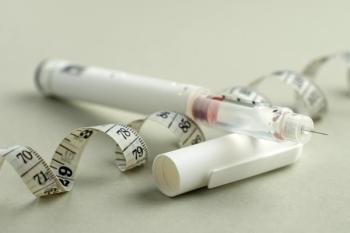
McKesson IdeaShare 2025: Workflow, Marketing, and Reimbursement Strategies for Integrating Clinical Services
As independent pharmacies expand beyond traditional dispensing to offer more patient-centered care, integrating clinical services like immunizations, chronic disease management, and health screenings into everyday operations has become essential. In this conversation, Nancy Lyons, BSPharm, MBA, CDCES, vice president and chief pharmacy officer of Health Mart by McKesson, discusses how pharmacies can smoothly incorporate these services into their workflow, build community awareness and trust, and navigate the complex reimbursement landscape. Her insights offer practical strategies for balancing clinical care with business efficiency—empowering pharmacists to thrive in a rapidly evolving health care environment.
Q: Beyond the initial setup, how can pharmacies effectively integrate these new clinical services into their existing workflow without overwhelming staff or compromising dispensing operations? What strategies have you found successful for seamless integration?
Nancy Lyons, BSPharm, MBA, CDCES: Yeah, I think your comment about integrating it within what you do today is really the place to start. Just to build on that a little bit, though, sometimes your workflow may need to be reimagined a bit. Many pharmacies work on an on-demand basis, where patients walk in, or they call, or they’re expecting their prescriptions in 15 minutes or less. Shifting to something that has been around for a while—like medication synchronization and the appointment-based model—allows for lots of benefits: staffing benefits, where you can plan the work; inventory benefits, where you can do just-in-time ordering.
But the key point is, with that appointment-based approach, you set expectations with your patient that you will have all their medications. You're saving them time, but you're also going to invest a few minutes with them—both with a pre-call to make sure nothing has changed, so you’re not reprocessing things when they come in for their appointment, and by collecting any problems they have, allowing the pharmacist time to think about them and really work with the patient.
And the beauty is, when patients come in expecting an appointment, you can also do a blood pressure check, provide chronic care or prevention services that may be billable depending on plans, and administer immunizations. This increases patient satisfaction—not only something pharmacists are always keyed into—but also helps reduce that sense of impending pressure when you're in the middle of workflow and suddenly have to give a shot. If you re-engineer how your staff thinks about workflow, make sure you have the right people in the right spaces doing the most with their training, and reserve pharmacist time appropriately, it’s manageable.
I hear the complaint all the time: “I just don’t have time.” One thing my staff has heard me say a million times is: we all have 24 hours. It’s how we create our work and how we prioritize. And I know pharmacists always want to prioritize patient care first. It just takes a little step back and some re-engineering to make that happen.
Q: Patient awareness and acceptance are crucial for the success of new services. What are effective strategies pharmacists can employ to educate their communities about the expanded clinical offerings and encourage patient participation?
Lyons: There are many, right? And I'm not a marketer by any means, but good marketing and a website are absolutely critical. Investing some time—just the other day, one of our Health Mart [Pharmacy of the Year] candidates for McKesson IdeaShare showed how they have a pharmacy technician with the title of “Marketing.” They're doing social media posts, deliberately putting out a number of pieces that patients see.
One thing I think our Health Mart pharmacies do quite well is being involved in the community—being a member of the school system, part of the recreational league (pick your sport). It’s so much easier, parent to parent or grandparent to grandparent, to infuse that trust. Many of our Health Mart pharmacies have been around for more than 100 years and have that niche—everyone just knows that’s where to go. Newer pharmacies need to build that every day.
Whether it’s education or empowering everyone on the team to know enough about pharmacy services to make referrals—the front checker during flu season should be asking if the patient knows they can get their flu, COVID-19, or RSV shot at the pharmacy. They should be happy to walk them back, refer them, or explain how to make an appointment. Everyone can be an advocate.
We’re also really proud of a number of our pharmacies that have started community health worker programs. McKesson has sponsored community health worker scholarships through a partner multiple times for any community pharmacy technician working in an independent pharmacy across the nation—regardless of customer status. We’ve trained over 120, and at IdeaShare, we’re going to make another announcement about additional scholarships. This really allows the technician to be empowered and dig in more with patients to explain services.
We also went a little further and armed them with a tool: healthmart.findhelp.com—a white label of FindHelp.com. It's zip-code-based, and consumers can use it themselves if they need transportation, childcare, food assistance—any of those things. Local services are listed, and they can get a direct connection. Many of our pharmacies also use this tool as part of their care plan and create specific referrals for patient needs.
At IdeaShare this year, we're focusing our pharmacy and all the solutions we have on solving patient and pharmacist problems. That carries through to community outreach—look around you, see what problems exist, and ask how the pharmacy can help solve them. Then just make sure everyone knows what you offer.
Q: Reimbursement for clinical services can be complex and vary by payer. What steps should pharmacists take to ensure they are adequately reimbursed for the clinical services they provide, and what advice do you have for navigating the reimbursement landscape?
Lyons: “Overwhelming” is definitely the word. Just in the past week, I’ve worked with 3 different national organizations that are trying to figure this out for the profession—some of them have been in existence for more than a decade. The key message is to focus on patients and not expect payers to adapt to pharmacy, but rather operate like any other provider seeking payment for services. That message seems to be prevailing now. It does come with some complexity—it often requires credentialing at the individual level, which is a different concept for pharmacists. Typically, it's the pharmacy that is credentialed to bill for prescription services, not the individual pharmacist.
It takes time. There is education needed—not just for pharmacists, but also for providers and payers to stop transferring pharmacy callers to the PBM side of the business. But we are making inroads there too. Through our relationship with Health Mart Atlas, we’ve signed an agreement with Pharmacy Profiles. They announced a few months ago that they earned credential verification organization status.
We’re encouraging pharmacies to get their profile set up—it’s free. Any pharmacist can go in and set up a profile where their credentials are verified. If needed, we can also leverage extra services from Pharmacy Profiles to help with that credentialing process.
Pharmacists can also credential directly through [the Council for Affordable Quality Healthcare] and [the National Committee for Quality Assurance]. It's still a little complicated and not always written with pharmacists in mind. The next step after credentialing is to ensure clinical guidelines are followed, care is delivered and documented, and—most importantly—that bills are submitted correctly and followed up on.
That whole ecosystem requires support. At Health Mart, we’re working on solutions to help smooth out those processes so pharmacists can focus on what they do best—providing care—and ensure they get paid for it.
Newsletter
Stay informed on drug updates, treatment guidelines, and pharmacy practice trends—subscribe to Pharmacy Times for weekly clinical insights.



















































































































































































































